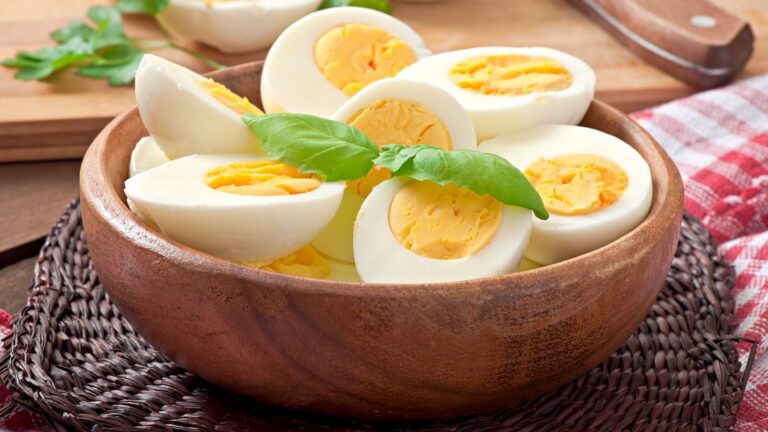Microwaves are great for quickly reheating leftovers, saving time compared to using an oven. However, they can struggle with certain foods, often heating them unevenly and increasing the risk of bacterial growth. To minimize this kind of risk, we’ve compiled a list of 17 foods you should avoid reheating in the microwave.
Pasta

The Huffington Post argues that microwave heat “can easily suck the moisture out of starchy foods like cooked pasta,” making it dry. Cream-based pasta sauces can also separate and oil out when microwaved, affecting texture and taste.
Bread

Bread can quickly lose moisture in the microwave, making it chewy and tough, and it can be unevenly heated with cold spots. The microwave process can accelerate the stalling process of bread, making it taste older than it is.
Chicken

All Recipes notes that the microwave can heat foods like chicken unevenly because it struggles to “penetrate thick layers of food.” This can lead to cold spots in the chicken that are perfect for bacteria, including salmonella, to multiply.
Rice

Contrary to popular belief, rice can be microwaved safely, but it must be piping hot throughout. Rice can contain Bacillus cereus spores that can survive microwaving and cause food poisoning, so reheating it in the oven is preferable to ensure it is evenly heated.
Potatoes

Baked potatoes wrapped in foil can be a breeding ground for Clostridium botulinum bacteria if the potatoes are not refrigerated after cooking. Real Simple notes that reheating the potatoes in the microwave won’t kill the bacteria.
Leafy Greens

Times Food warns that when leafy greens are reheated in a microwave, “naturally occurring nitrates may convert to nitrosamines, which can be carcinogenic.” Microwaving can also overly wilt leafy greens, leaving them soggy and unappetizing.
Seafood

Reheating seafood in the microwave can leave it rubbery and tough, losing its texture. It will also leave the microwave with a strong, fishy smell as a byproduct of the breakdown of the fatty oil, which can be hard to get rid of.
Pizza

Microwaving pizza often results in a soft, chewy crust instead of the crisp crust most people prefer. Toppings like chicken and seafood can also become rubbery and lose their moisture, making them overly dry.
Beans

It’s easy to overcook beans in the microwave, making them mushy or overly dry. They must be heated at 30-second intervals and stirred to prevent them from being overcooked. Reheating them in a saucepan is generally more straightforward.
Beetroot

Like leafy greens, beetroot contains a high concentration of nitrates that risk becoming carcinogenic when reheated in the microwave. They can also become overly soft, losing their firm texture and natural sweetness.
Oils

Bustle notes that if oils are overheated in the microwave, they can produce “toxic fumes and hazardous substances called free radicals that can cause issues such as cancer.” It’s best to reheat oily foods in the oven to avoid burning them.
Processed Meats

Reheating processed meats in the microwave can make them rubbery and unpalatable, and their fats can be rendered out, making them dry and tough. Additionally, microwaving them can lead to the formation of harmful compounds due to their high concentration of nitrates.
Eggs

Eggs generally should be reheated in the oven; most forms of cooked eggs are not suitable for reheating in the microwave. Southern Living warns that boiled eggs can burst in the microwave and that “scrambled eggs, frittatas, and omelets will turn rubbery when reheated in the microwave.”
Dairy Products

Fermented dairy products like yogurt can separate and curdle when reheated in the microwave, so they should be heated in 20-second intervals and stirred in between. Reheating them in a saucepan where they can be stirred as they heat up will avoid curdling.
Mushrooms

According to Forkly, if mushrooms weren’t refrigerated as soon as they were cooked, they could cause food poisoning when heated in the microwave. The protein structure of mushrooms and their complex enzymes “can become destroyed if they’re not refrigerated immediately,” leading to food poisoning when consumed after microwaving.
Fried Foods

Fried food can lose its crispness when microwaved, becoming soggy, while its grease becomes unevenly redistributed. To avoid dulling the flavor of fried food and losing its crispness, it’s best to reheat it in an oven.
Cakes and Pastries

Cakes and pastries have a delicate, moist texture that can become dry and crumbly when they are microwaved. Icings and frostings can also melt off if microwaved for too long, ruining the cake’s appearance.

